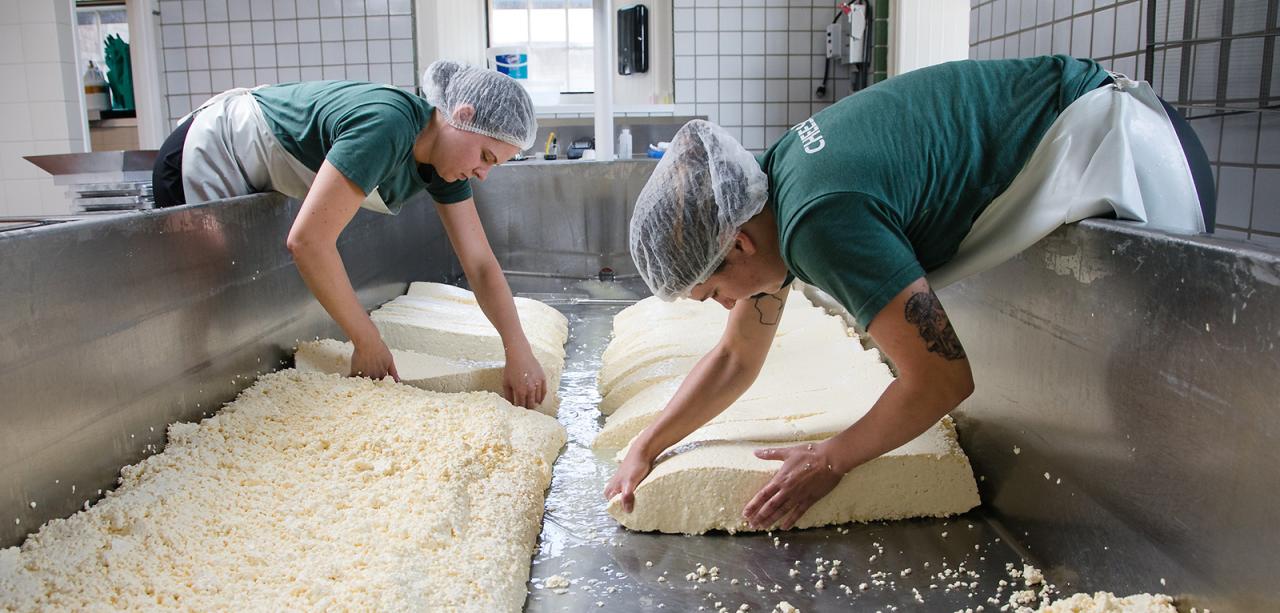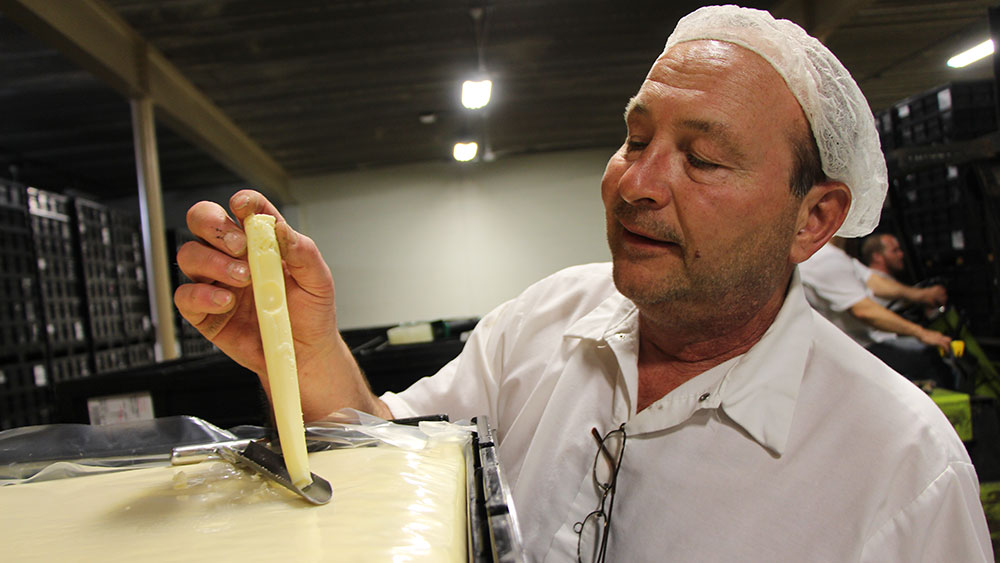Fulfill the Cheese Makers Melbourne Trusts: The Heritage of Floridia Cheese Thomastown
Fulfill the Cheese Makers Melbourne Trusts: The Heritage of Floridia Cheese Thomastown
Blog Article
Opening the Secrets of Artisanal Cheese Making: A Step-by-Step Do It Yourself Overview
In the world of cooking workmanship, artisanal cheese making stands as a testament to the fragile equilibrium in between practice and technology. As we get started on this trip to debunk the art of developing beautiful cheeses, we are faced with a tapestry of secrets and abilities waiting to be unraveled.
Selecting the Right Milk
When starting the journey of artisanal cheese production, the selection of milk plays an important duty in determining the high quality and characteristics of the final item. The sort of milk picked affects the flavor, appearance, and in general account of celebrity. Raw milk, directly from the animal, is liked by many artisanal cheesemakers because of its special blend of enzymes, bacteria, and taste substances. Nevertheless, using raw milk comes with threats and guidelines, making sterilized milk a much safer alternative for newbies.
When picking milk for cheese production, it is essential to take into consideration the fat content. Higher fat material in milk can lead to a creamier and richer cheese, while reduced fat material might result in a drier and stronger texture. In addition, the source of the milk, whether from cows, goats, sheep, or buffalo, contributes distinctive flavors and features to the cheese (Floridia Cheese Melbourne). Each type of milk brings its very own nuances, permitting for a large range of cheese varieties to be crafted based on the picked milk. Ultimately, the choice of milk is a fundamental choice that establishes the foundation for an effective artisanal cheese-making venture.
Culturing and Coagulating
To launch the cheese-making procedure, the essential steps of culturing and coagulating should be very carefully executed to transform milk into curds and whey. Culturing involves presenting valuable microorganisms to the milk, which after that starts the fermentation procedure. These microorganisms transform lactose (milk sugar) right into lactic acid, developing the acidic setting essential for coagulation. The kind of society made use of can significantly impact the flavor, texture, and ripening of the final cheese product.

The timing and temperature level control during culturing and coagulation are critical factors that influence the final result of the cheese. Correct execution of these actions is vital to make sure the preferred texture, flavor, and consistency of the artisanal cheese being created.
Draining and Pushing Curds
After the milk proteins have actually coagulated and the curds have actually been reduced to release whey, the following important action in artisanal cheese making involves draining pipes and pushing the curds to achieve the preferred appearance and consistency of the final cheese item. The time for draining can vary depending on the type of cheese being made and the wanted moisture material.
Pressing assists remove any remaining whey and compacts the curds to form a solid cheese wheel. Proper pushing and draining pipes are critical steps that dramatically impact the high quality and attributes of the artisanal cheese being created.
Aging and Flavoring Methods
Carrying out thorough aging and flavor strategies is essential in improving the depth and complexity of artisanal cheeses, elevating their preference accounts to charming degrees of improvement and sophistication. Aging plays a critical role in developing the distinct flavors and textures that distinguish artisanal cheeses. Throughout the aging procedure, cheeses are stored in carefully controlled environments where variables such as airflow, temperature level, and humidity are adjusted to encourage the development of valuable mold and mildews and germs. This regulated atmosphere allows the cheese to mature gradually, creating abundant flavors and complicated scents.
Seasoning techniques likewise add dramatically to the final preference of artisanal cheeses. Cheesemakers might choose to introduce extra flavors by incorporating components such as my blog natural herbs, spices, or perhaps fruits into the cheese during the manufacturing procedure. Additionally, some cheeses are washed or rubbed with different fluids, such as brine or alcohol, to boost their appearances and tastes.
Covering and Storing Cheeses

Final Thought
Finally, grasping the art of artisanal cheese making entails very carefully selecting the appropriate milk, following exact culturing and coagulating procedures, draining learn the facts here now and pressing curds effectively, and using numerous aging and flavoring strategies. By complying with these steps carefully and with attention to detail, you can produce your very own delicious and distinct cheeses at home. Bear in mind to wrap and keep your cheeses correctly to ensure ideal flavor and structure growth. Delighted cheese making!
Each kind of milk brings its own subtleties, enabling for a wide range of cheese ranges to be crafted based on the selected milk.After the milk proteins have coagulated and the curds have been cut to release whey, the next critical action in artisanal cheese making entails draining pipes and pushing the curds to attain the desired appearance and uniformity of the final cheese product. Many cheeses ought to be wrapped in wax paper or cheese paper to allow them to take a breath while protecting them from drying out. For cheeses that require to proceed aging, such as bloomy skins or washed rinds, guarantee they are stored in a trendy setting like a cheese cavern or a fridge set this content to the suitable temperature. By paying focus to the covering and storage of artisanal cheeses, cheese manufacturers and fanatics can protect the integrity of these delicacies and fully enjoy their intricate tastes.
Report this page